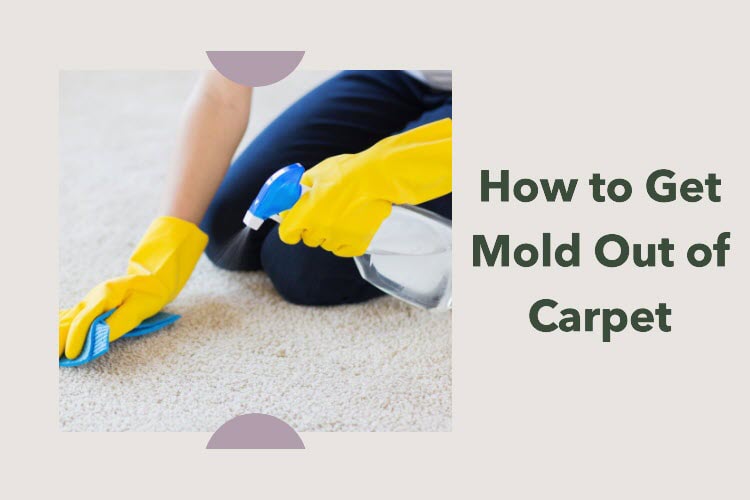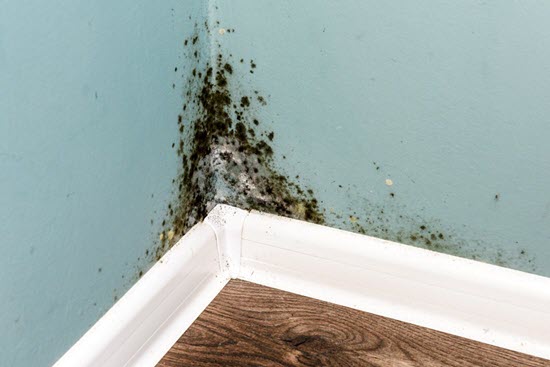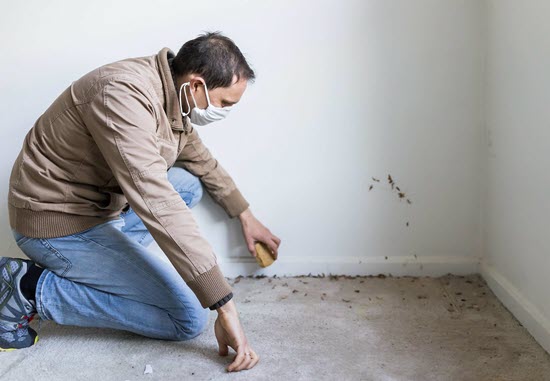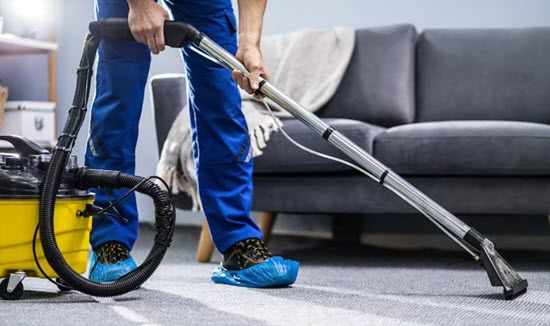Mold can be a pesky, unsightly issue in any home, and having it in your carpet can be particularly troublesome. It’s important to know how to get mold out of carpet effectively and safely to protect both your home and your health.
Our favorite method for how to get mold out of carpet is to use baking soda and vinegar solution. Apply this solution to the moldy area, let it sit for 30 minutes, gently scrub the carpet with a soft brush and rinse with water.
In this article, we’ll discuss in greater depth the different methods for how to get mold out of carpet, as well as how to identify mold in your carpet and expert preventive measures to keep mold from returning.
Key Takeaways
- Learn how to identify and remove mold from your carpet safely and effectively
- Equip yourself with the necessary knowledge and tools to prevent future mold growth
- Maintain a healthy indoor environment by understanding mold and its effects on your home and health
In This Article
What is Mold? Why is It So Dangerous?
Mold is a type of fungus that thrives in damp and humid conditions. It can be harmful to your health and damage your home. So it’s important to know how to get mold out of carpet.
Mold reproduces through spores, which are microscopic particles that are released into the air. When these spores land on a damp surface, they begin to grow and multiply. Over time, mold can cause discoloration, odors, and even structural damage to your carpet and home.
There are many species of mold, but all of them need moisture to grow. Some common sources of moisture in your home include leaks, condensation, and inadequate ventilation. To prevent mold growth, it’s crucial to address these issues and maintain a clean and dry environment.
Remember that mold can cause health problems, so it’s essential to wear protective gear like gloves, goggles, and a mask while cleaning. Consult the following sections for a step-by-step guide on how to get mold out of carpet effectively and safely.
How to Identify Mold in Your Carpet: 3 Signs
The first step in knowing how to get mold out of your carpet is identifying its presence. Mold is not always visible, but there are some signs that can help you detect it.
- Smell: A musty odor is often the first sign of mold growth in your carpet. Trust your nose; if it smells damp or musty, there’s a chance that mold is lurking beneath the carpet fibers.
- Discoloration: A visible mold patch usually appears as an irregularly shaped area of black, green, or white fuzzy growth. Look for any color changes or spots on your carpet that don’t match the surrounding area.
- Health symptoms: Pay attention to any allergic reactions or respiratory issues, such as sneezing, coughing, or difficulty breathing among the occupants of your home. These symptoms could indicate the presence of harmful mold spores in your indoor environment.
Once you’ve identified mold in your carpet, follow these steps to remove it:
- Ventilate the area: Open windows and doors to increase airflow and help dry out the carpet more quickly.
- Wear protective gear: Don a mask, gloves, and goggles to protect yourself from mold exposure during the cleaning process.
- Use a mold-killing cleaner: Apply a mold-killing solution, such as white vinegar or a commercially available mold remover, to the affected area. Scrub the carpet gently with a soft brush, making sure to avoid spreading the mold to other areas.
- Dry the carpet thoroughly: After you’ve treated the mold, it’s important to completely dry the carpet. Use a dehumidifier, fans, or heaters to expedite the drying process, and take care not to allow the carpet to remain damp for an extended period.
- Dispose of moldy materials: If the mold growth is extensive, you may need to replace portions of your carpet or underlay. Dispose of any moldy materials following your municipality’s guidelines for hazardous waste disposal.
Remember, the key to preventing mold growth is maintaining a dry environment. Regularly inspect your carpet for signs of moisture or mold, and address any issues promptly to keep your home healthy and mold-free.
Gearing up for Cleaning
As you learn how to get mold out of carpet, it’s crucial to start by preparing yourself with the right safety equipment and materials. This section will guide you through the steps required.
Safety Equipment
Before you begin the cleaning process, it’s important to protect yourself from exposure to mold and the chemicals used to remove it. The following safety measures will ensure you’re adequately protected as you learn how to get mold out of carpet.
- Wear gloves: Nitrile or latex gloves will prevent direct contact with mold and cleaning solutions. This will help avoid any skin irritation.
- Protective eyewear: Wearing goggles or safety glasses will shield your eyes from mold spores and chemicals that might irritate or harm them.
- Face mask or respirator: Mold spores can be harmful when inhaled. A face mask, preferably an N95 respirator, will provide the best protection for your respiratory system.
- Coveralls or long-sleeved clothing: Wearing coveralls or long-sleeved clothing will prevent mold spores and chemicals from coming in contact with your skin. Make sure all clothing is comfortable and easy to move in.
Remember to always wash your hands thoroughly after you have finished cleaning, and launder any clothing items that may have come in contact with mold. If you do get moldy clothes, check out How to Get Mold Out of Clothes.
Now that you have your safety equipment prepared, you can confidently proceed with the process of removing mold from your carpet. By following this guidance and maintaining proper safety measures, you will be well-protected as you work to restore your carpet to its original, mold-free condition.
How to Get Mold Out of Carpet: 3 Ways
Mold can be a pesky problem, especially when it starts growing in your carpet. But don’t worry, there are ways on how to get mold out of carpet. Follow this guide and have a mold-free carpet in no time!
DIY Methods
First and foremost, you can try some simple DIY methods to clean mold from your carpet. Here are a few effective techniques:
- Baking soda and vinegar solution: Mix equal parts of baking soda and white vinegar in a spray bottle. Apply this solution to the affected area and let it sit for about 30 minutes. Gently scrub the carpet with a soft brush and rinse with water. Make sure to dry the area thoroughly with a fan or dehumidifier to prevent mold from growing back.
- Steam cleaning: Rent a steam cleaner or use one you have at home to remove the mold from your carpet. Ensure that your carpet is dry after the cleaning as moisture can encourage mold growth.
- Sunlight: Take advantage of natural sunlight whenever possible. Exposing your carpet to the sun for a few hours can help kill mold spores and dry out the carpet.
Remember to always wear gloves and a mask when dealing with mold for your safety.
Professional Cleaning Services
Sometimes, DIY methods may not be enough to tackle stubborn mold infestations. In such cases, it is advisable to hire professional cleaning services to remove mold from your carpet. These experts will have the right equipment, products, and expertise to handle mold effectively. Moreover, they can also provide advice on how to prevent mold from coming back in the future.
In conclusion, keeping your carpet mold-free is crucial for a healthy living environment. Follow these tips and maintain the cleanliness of your carpet regularly to avoid mold growth.
Preventing Future Mold Growth
Now that you’ve learned how to get mold out of carpet, it’s essential to focus on preventing future mold growth. A proactive approach will save you time, energy, and money in the long run. Here are some useful tips to keep your carpet mold-free:
- Control humidity levels: High humidity is one of the primary factors contributing to mold growth. Aim to maintain the indoor humidity below 60% to discourage mold development. You can use a dehumidifier or an air conditioner to achieve this.
- Proper ventilation: Ensuring proper air circulation is crucial in preventing mold growth. It would be best if you kept your windows and doors open during the day to allow fresh air to enter your home, promoting quicker drying of carpets. Moreover, installing exhaust fans and vents in moisture-prone areas is an excellent way to keep mold at bay.
- Address water damage promptly: In case of any water leaks or spills, act fast. The sooner you clean and dry the affected area, the lesser the chances for mold to grow. Always keep an eye on potential water sources like pipes, faucets, and appliances.
- Regular cleaning: Regular vacuuming of your carpets not only keeps them clean but also removes any mold spores that may have settled onto them, minimizing the likelihood of mold growth. Additionally, using a mold prevention solution specifically designed for carpets can be an effective measure.
- Consider the type of carpet: Carpets that have a low pile or are made from synthetic materials are less prone to mold growth as they can dry faster. Opting for such carpets in high-moisture areas can go a long way in preventing future issues.
By following these guidelines, you can enjoy the benefits of clean, mold-free carpets in your home. Remember to stay proactive and always keep an eye out for any signs of moisture or mold growth to address them quickly and efficiently.
Frequently Asked Questions
What is the best cleaner for removing mold from carpets?
When it comes to removing mold from carpets, you may consider using a combination of white vinegar and water. This solution is natural, effective, and safe for most carpet materials.
Mix equal parts of white vinegar and water in a spray bottle, spray it onto the moldy area, and let it sit for about 30 minutes. Then scrub the area with a brush, and use a clean cloth to blot away any excess moisture. Make sure to dry the carpet thoroughly to prevent the mold from returning.
Are there any health risks associated with mold in carpets?
Yes, mold in carpets can pose health risks, particularly for those with mold allergies or weakened immune systems. Exposure to mold can lead to respiratory issues, skin irritation, and sinus congestion.
In some cases, prolonged exposure to mold in carpets can cause more severe health problems, like asthma attacks or allergic reactions. It’s essential to address any mold problems in your carpet as soon as possible to minimize potential health risks.
Which household items can effectively remove mold from carpets?
Apart from white vinegar, other household items that can help eliminate mold from carpets include baking soda and hydrogen peroxide. Baking soda is a natural deodorizer and an effective mold remover. Sprinkle it onto the moldy area, let it sit for a while, then vacuum it up.
Hydrogen peroxide, on the other hand, can be mixed with water and sprayed onto the moldy carpet. After letting it sit for a few minutes, scrub the area and blot it dry.
What are some mold removal sprays for carpets?
There are several commercial mold removal sprays available for treating mold in carpets. These products often contain strong chemicals designed to kill mold spores and prevent them from returning.
Some popular mold removal sprays include Concrobium Mold Control, RMR-86 Instant Mold Stain Remover, and Mold Armor Instant Mold & Mildew Stain Remover. When using these products, always follow the manufacturer’s instructions and take necessary precautions to protect yourself and your carpet.
Can moldy carpets be salvaged?
In some cases, it is possible to salvage moldy carpets, especially if the mold growth is limited to a small area and caught early. Thorough cleaning, using the methods mentioned above, and proper drying can help save your carpet.
However, if the mold has deeply penetrated the carpet fibers or is widespread, it may be necessary to replace the carpet entirely. Always consult a professional if you’re uncertain about how to get mold out of carpet safely and effectively.
What are some symptoms of mold in carpets?
Some common symptoms of mold in carpets include:
- A musty odor
- Visible discoloration
- Dampness in the affected area
Additionally, if you or your family members are experiencing increased allergy symptoms or respiratory issues, this could be a sign of mold growth within your carpets.
Regular inspection, proper cleaning, and maintaining good indoor air quality are crucial to prevent mold growth and the potential health hazards associated with it.
Final Thoughts on How to Get Mold Out of Carpet
By following the steps and guidelines discussed, you now know how to get mold out of carpet effectively. Remember, the key to success lies in thorough cleaning, drying, and inspection. Mold can be a persistent problem, and it’s crucial to be vigilant in preventing its growth and spread.
To summarize the main steps for how to get mold out of carpet:
- First ensure you have proper safety gear and equipment ready.
- Vacuum the molded area to remove any loose debris.
- Next, use a suitable cleaning solution, such as a mixture of water and distilled white vinegar, to treat the moldy spots.
- Be sure to scrub gently but firmly to remove any mold that has taken hold within your carpet’s fibers.
- After treating the area, rinse the carpet with clean water, and use a wet-dry vacuum to extract as much water as possible.
- Then, make sure you dry the carpet thoroughly, utilizing fans and dehumidifiers to prevent further mold growth.
- Finally, inspect the affected area for any remaining signs of mold. If necessary, repeat the cleaning and drying process to guarantee your success.
While these steps from our guide on how to get mold out of carpet, you will solve most mold issues. If you continue to have persistent mold problems or face significant water damage, consider consulting a professional cleaning service or contacting a mold remediation specialist. They have the experience and expertise needed to restore your carpet to its former glory and protect your health.
In conclusion, equipped with this knowledge, you can confidently address mold problems in your carpets, ensuring a clean, safe, and mold-free living environment. Good luck!






